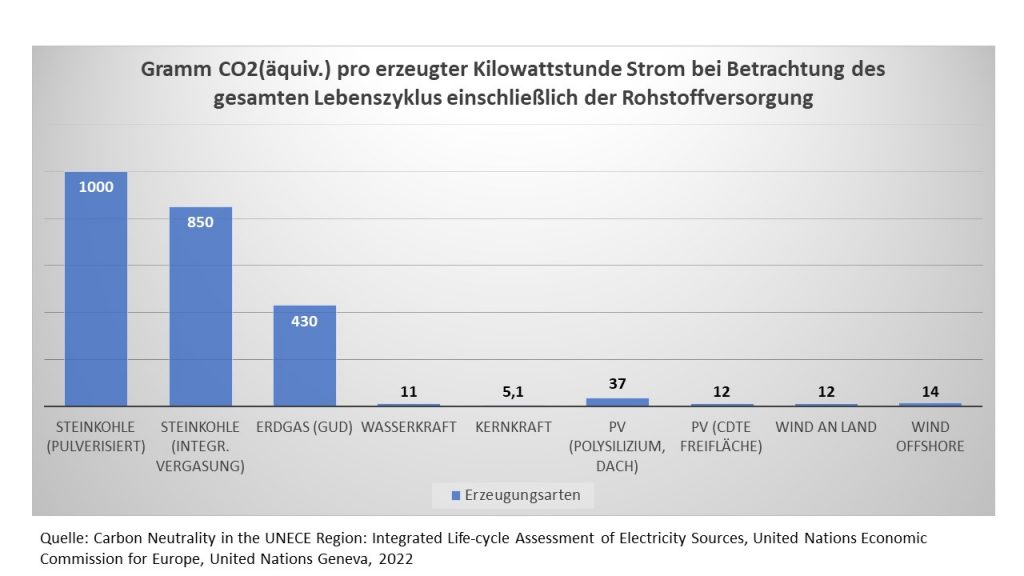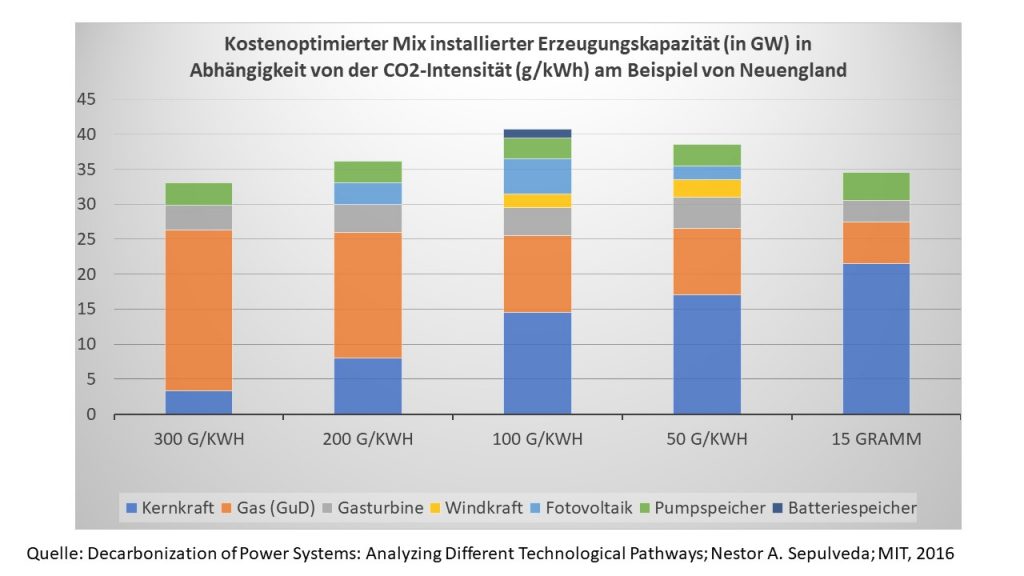Climate friendliness
Nuclear power is one of the most climate-friendly forms of electricity generation and is comparable to or better than wind power and hydropower in this respect. With their total generation of 5,600 terawatt hours of electricity (5,600 billion kWh), German nuclear power plants have prevented the emission of around 5.6 billion tonnes of CO2 avoided, corresponding to the current greenhouse gas emissions of all sectors (energy, transport, buildings, industry, agriculture) of seven and a half years.
Accordingly, nuclear energy is an important component of climate policy in many countries in order to achieve the goals of reducing greenhouse gas emissions. The major contribution of nuclear power plants to security of supply and their simple and easy integration into the power generation system, for example in place of emission-intensive coal-fired power plants, also plays a role here. These characteristics also have a positive impact on the economic efficiency of electricity supply as a whole and facilitate the transformation to a low-emission electricity supply.

A new development is the utilisation of waste heat from nuclear power plants for processes to remove CO2 directly from the atmosphere (Direct Air Capture). A pilot plant for DAC is currently being planned in connection with the Sizewell C nuclear power plant in the UK, which is about to start construction. If the pilot plant concept proves successful, an industrial-scale plant could be built to capture 1.5 million tonnes of CO2 per year from the atmosphere, which could either be stored permanently underground - for example in depleted natural gas fields - or used to produce synthetic methane gas or synfuel for aircraft, ships, large machines, trucks or cars. A nuclear power plant with a DAC plant that utilises the waste heat would be a CO2 sink. In principle, the technology could be applied to any nuclear power plant with a light water reactor, including existing plants. DAC thus represents the second easily scalable application for the waste heat from light water reactors alongside seawater desalination, which is characterised by a relatively low temperature level. In most applications of seawater desalination with nuclear energy, however, this is used exclusively or predominantly for the power plants' own requirements.

Nuclear power is best suited for the so-called deep decarbonisation of electricity generation, i.e. for achieving an average CO2 intensity of well below 100 grams per kilowatt hour for the entire electricity generation system. The figure above shows the result of a cost-optimising analysis for the entire electricity generation system as a function of a target value for CO2 intensity. The example was calculated for the ISO-New England power grid, but is transferable to comparable climate regions without large hydropower potential. The scenario shown is RN&S&LWR (gas power, photovoltaics, wind power, pumped storage and battery storage, nuclear power).
The Futures énergétiques 2050 (2021) report by the French electricity grid operator RTE looks at the situation from a different perspective: it examines the scenario of phasing out nuclear energy in France by 2035. In terms of CO2 intensity, the result is that CO2 emissions will increase by 56 million tonnes of CO2 per year even with a strong expansion of renewable energies. This would correspond to an increase in CO2 intensity of around 100 g/kWh from approx. 50 g/kWh to 150 g/kWh.
In the German case, too, there are indications from practice that a deep decarbonisation of electricity generation cannot be achieved with renewable energies alone. For example, even with a very high share of renewable energies in daytime electricity generation of around 80 per cent, as can often be observed in summer, and despite electricity imports, the CO2 intensity fluctuates between 200 and 300 g/kWh.
he



